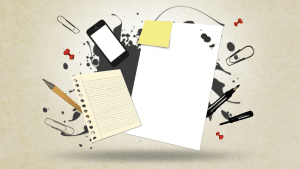
Think about this: You open a document, and the first thing you notice is that it’s speaking directly to you – your name, interests, and needs. It’s not just information; it feels like a conversation tailored just for you. That’s the power of personalization in documents.
Personalizing documents makes them more interesting to read and strengthens and makes the information inside easier to remember.
This article will discuss how personalization makes documents more interesting, why it’s important, and how to use it to reach your goals.
Why Personalization Makes Documents Stand Out
Individualized content is more likely to keep people’s attention than content that is the same for everyone. Just putting someone’s name at the top isn’t enough. The message must match their likes, dislikes, habits, and expectations.
It Grabs the Reader’s Attention
A customized document grabs people right away since it is relevant. For instance, including particular information about a client’s prior contacts with your company might appear customized and useful rather than generic. Readers are kept attentive and involved by this link.
It Builds a Sense of Value
Personalization shows that the person receiving the message is more than just a name on a list. It shows that you’ve taken the time to understand them by meeting their specific wants and preferences. Feeling worthy builds trust and strengthens the relationship.
What Formats Have to Do with Customization
The format of a paper can make it easier or harder to customize. The correct format ensures the information gets to the right person and can be changed to fit their needs.
Choose Flexible Formats
Formats like PDFs allow you to read files the same way on all devices, so the personalized parts stay the same. Tools that let you convert from docx to PDF can help you keep the document’s layout while making it easy to share.
Interactive Elements for Engagement
If you want people to get more involved, you should provide features like interactive forms and clickable links. An individualized link to a landing page or personalized follow-up materials can make your message go much further.
Simple Ways to Personalize Documents Effectively
There is no need for complexity when beginning the customization process. Making even minor adjustments might significantly impact the document’s impact.
Customize Content Based on Context
Instead of writing the same message for everyone, adjust the tone, examples, and key points to suit the audience. For instance, a sales pitch for a healthcare client might highlight efficiency and compliance, while one for a tech startup might focus on scalability and innovation.
Use Visuals That Speak to the Reader
Use charts, photos, or graphics related to the recipient’s field or objectives. Adding images specific to their interests makes the document more enjoyable and helps convey the point better.
Break Down Complex Ideas
Craft responses that fit the reader’s knowledge of the topic. For example, a technical report for a non-specialist audience may use analogies or simpler language, whereas one for industry professionals might get right into technical specifics. This gives the material a friendly and worthwhile vibe.
Organize Content Around Reader Priorities
Structure your document so that the most important information for the recipient comes first. If you know a decision-maker values cost-effectiveness, emphasize pricing and ROI early on rather than burying it in the middle of the document.
Last Updated on November 20, 2024